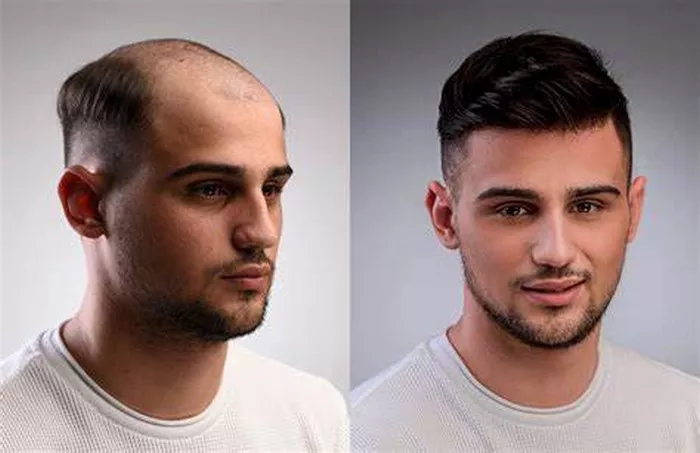Undergoing a Follicular Unit Extraction (FUE) hair transplant is a significant step toward restoring hair and enhancing one’s appearance. While patients often focus on the procedure itself, post-operative care is crucial for achieving the best results. One common concern among patients is when they can safely scratch their heads after the surgery. This article will provide a comprehensive overview of the FUE recovery process, addressing the timeline for scratching, what to expect during healing, and tips for proper aftercare.
Understanding FUE Hair Transplant
What Is FUE?
Follicular Unit Extraction (FUE) is a minimally invasive hair restoration technique. During the procedure, individual hair follicles are extracted from a donor area (usually the back of the scalp) and implanted into thinning or balding areas. The benefits of FUE include:
Minimal scarring
Quick recovery time
Natural-looking results
The Recovery Process
Understanding the recovery process is essential for a successful outcome. After an FUE hair transplant, patients can expect a few stages of healing, which can influence when it is safe to scratch the scalp.
The Timeline of Healing After FUE
Immediate Post-Operative Period (Days 1-3)
What to Expect
Swelling and Redness: Patients may experience mild swelling and redness at the donor and recipient sites.
Scabbing: Small scabs may form around the transplanted follicles.
Scratching Guidelines
Do Not Scratch: It is crucial to avoid scratching during this period. Scratching can dislodge grafts and lead to complications.
Gentle Cleansing: Patients can gently cleanse the scalp using a recommended shampoo, but vigorous rubbing should be avoided.
Early Healing Phase (Days 4-10)
What to Expect
Scab Formation: The scabs will begin to crust over, and some patients may experience itching as the healing process progresses.
Hair Shedding: It is common for transplanted hair to shed during this phase.
Scratching Guidelines
Avoid Scratching: While some itching is normal, scratching should still be avoided. Instead, patients can lightly pat or tap the area if needed.
Moisturizing: Applying a gentle, doctor-recommended moisturizer can help alleviate itching.
Mid-Healing Phase (Days 11-21)
What to Expect
Reduced Itching: As healing progresses, itching may decrease significantly.
New Hair Growth: Around two to three weeks post-surgery, patients may start to see new hair growth emerging.
Scratching Guidelines
Monitor Itching: If itching persists, patients can begin to scratch gently but should still exercise caution.
Use Clean Hands: Ensure that hands are clean before touching the scalp to minimize the risk of infection.
Later Healing Phase (Weeks 3-8)
What to Expect
Continued Healing: The scalp will continue to heal, and any remaining scabs will fall off.
Increased Hair Growth: Patients should see more noticeable hair growth as time goes on.
Scratching Guidelines
Light Scratching Allowed: By this stage, gentle scratching may be permitted if itching persists. However, it’s crucial to avoid excessive force.
Listen to Your Body: If there is discomfort or bleeding while scratching, stop immediately.
Best Practices for Post-FUE Care
1. Follow Your Surgeon’s Instructions
Every patient is unique, and following post-operative care instructions provided by the surgeon is essential for optimal recovery.
2. Maintain Scalp Hygiene
Gentle Washing: Use a mild, sulfate-free shampoo to cleanse the scalp gently. Avoid scrubbing or vigorous washing.
Pat Dry: After washing, gently pat the scalp dry with a clean towel.
3. Avoid Direct Sunlight
Protect the scalp from direct sunlight for at least four weeks post-surgery. If sun exposure is unavoidable, wearing a hat can provide protection.
4. Limit Physical Activity
For at least a week after the procedure, avoid strenuous physical activities and exercises that may cause sweating, as this can irritate the scalp.
5. Manage Itching Responsively
Cold Compresses: Applying a cold compress can soothe itchy areas without causing damage.
Medicated Creams: Consult with your surgeon about any medicated creams or ointments that may help relieve itching.
Potential Complications
1. Infection
Scratching can introduce bacteria, leading to infection. Signs of infection include:
Increased redness
Swelling
Pus or drainage
2. Graft Dislodgment
Improper care or excessive scratching can dislodge hair grafts, jeopardizing the results of the procedure.
3. Scarring
While FUE typically leaves minimal scarring, excessive irritation or scratching can lead to more noticeable scars.
Conclusion
The question of when it is safe to scratch your head after an FUE hair transplant is important for patients to consider. Adhering to post-operative care guidelines is essential for achieving the best results and minimizing complications. While some itching is normal, it is crucial to avoid scratching during the initial healing stages. By following the recommended timeline and best practices, patients can ensure a smoother recovery and enjoy the benefits of their hair restoration procedure. Remember to consult your surgeon with any concerns or questions regarding post-operative care to ensure the best possible outcome.
Related topics:
- Why Are Hair Transplants So Expensive? To Get the Truth
- Why Do Hair Transplants Look Fake? Understanding the Factors
- When Can I Go to the Gym After Hair Transplant


